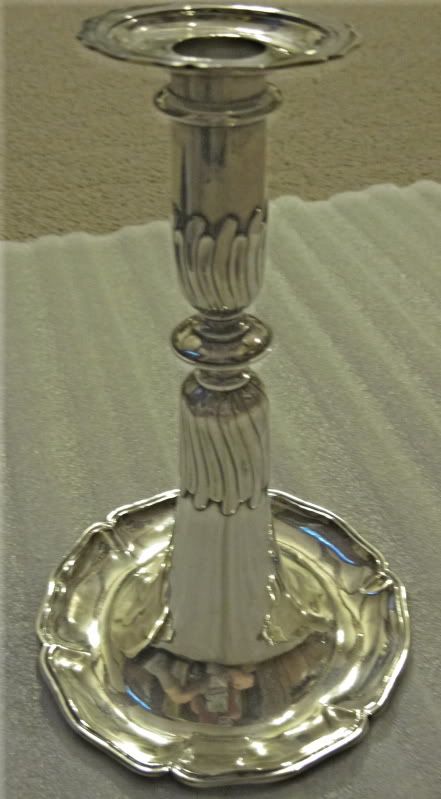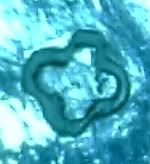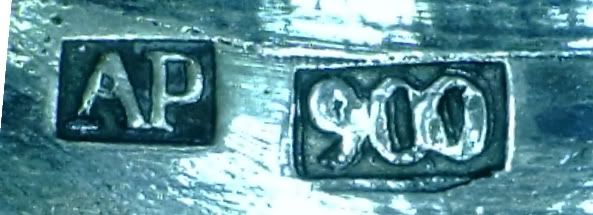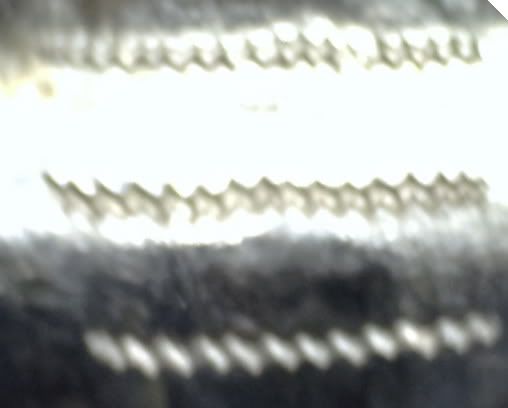
I have a pair of candlesticks, each with a removable bobèche, that are 9.5 inches tall and quite heavy. They have 4 markings:

I believe this mark to be a version of the city mark for Tallinn (also known as Reval), Estonia, pictured on page 362 of Tardy's book; it changed form slightly over time.

In 2005, Sazikov2000 and Blakstone had a discussion, and the following remarks were made that may or may not pertain to my candlesticks: "On the silver of the silversmith Joseph Kopf from Reval (Tallinn) one can find next to the Kokoshnik the Kyrillik initials "AP" from Alexander Wassilewitsch Romanow (1903-1908) from the assay office in St. Petersburg," and "After 1924, it was the first time allowed to fabricate silver with a content of 800/1000," and "Estonian silver is very hard to categorise and one must have seen many, many different pieces to know what it is and where from it is in reality."

And from an article by Willand Ringborg for ASCAS, Russian Silver Assay Masters in the Western Provinces/A case study of Estonia in the 19th centruy: "Sometimes one can see the sample of the proof master or the alderman (eldest brother, chairman) of the guild, a zigzag pattern as on an adder close to the other stamps on the bottom of the piece."
By the way, I have seen modern versions of this same type of candlestick produced by the Jezler factory. Thanks so much for your help!
.



